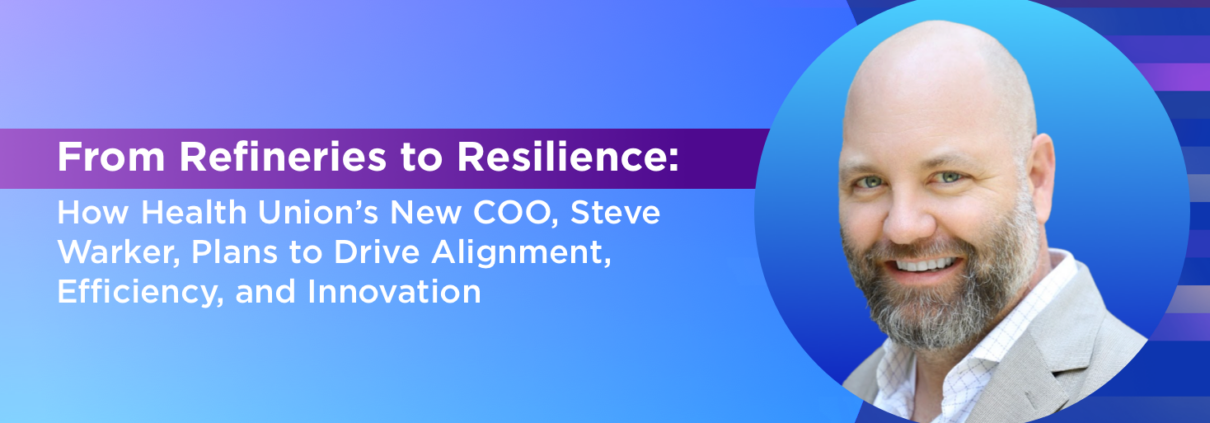2. Leveraging First-Party Data
As third-party cookies become obsolete, using first-party data collected directly from healthcare HCPs and patients is crucial for crafting targeted, hyper-personalized campaigns. Enhanced targeting precision is achieved by collaborating with media partners who also bring rich first-party data to the table, enabling the creation of campaigns that are finely tuned to specific medical specialties, practice locations, or individual preferences.
Utilizing internal and external first-party data ensures that each interaction is highly relevant, significantly strengthening the effectiveness of marketing efforts. Such a tailored approach optimizes advertising budgets and leads to a higher return on investment. By aligning marketing strategies closely with the specific needs and behaviors of the intended audience, healthcare brands can drive more impactful interactions and achieve greater efficiencies in their marketing investments.
3. Prioritizing HCP Marketing
More healthcare marketers are shifting towards engaging healthcare providers (HCPs) rather than direct patient outreach in response to increasingly stringent patient privacy regulations. This strategic pivot allows healthcare and pharmaceutical brands to enhance brand awareness and educate HCPs about the benefits and applications of their products and services. By targeting HCPs, particularly those specializing in relevant health conditions, brands effectively place their offerings in the hands of trusted advisors who are likely to recommend or prescribe these solutions to their patients.
This method adheres to privacy regulations and capitalizes on the trusted relationships between HCPs and patients. It’s a way to indirectly connect with the patient population while ensuring compliance and confidentiality.
4. Compliant Data-driven Patient Targeting
Sophisticated data-driven targeting techniques are increasingly employed to broaden patient outreach while adhering to HIPAA compliance. These precise targeting methods help optimize marketing resources, significantly improving the effectiveness of healthcare campaigns and ultimately enhancing patient support and care. The strategies outlined below are tailored to refine the process of identifying and reaching particular patient groups, allowing for the creation of personalized experiences that truly resonate with their individual needs and preferences:
- Modeled Claims Targeting: Utilizes millions of de-identified patient profiles from medical interactions, billing records, and insurance data to build targeted audiences based on trends in diagnosis, prescriptions, and procedures, ideal for marketing products undergoing clinical trials.
- Location-Based Targeting: Employs GPS, IP addresses, Wi-Fi, and Bluetooth technologies to tailor marketing messages based on the physical location of the audience, enhancing relevance and personalization.
- Behavioral Targeting: Captures user interest data from online activities like search terms, site visits, and purchases to build profiles likely to engage with specific healthcare products, using real-time data for precise audience targeting.
- Seed URL Targeting: Creates look-alike consumer profiles using a seed list of URLs, matching them to similar sites in the network to target users who visited them within the past 30 days, helping marketers understand and replicate successful behaviors and demographics.
- Contextual Targeting: Place ads on web pages based on the content’s themes and keywords without relying on personal search history, effectively targeting potential patients with relevant healthcare messages while respecting privacy.
5. Embracing Digital Marketing Strategies
Digital marketing is essential for healthcare organizations, particularly in the medical device and biotech sectors[4]; it’s impossible to compete effectively without it. As HCPs and consumers increasingly turn to online channels for healthcare information, traditional strategies relying heavily on sales teams are becoming outdated. Instead, healthcare brands are adopting digital tactics such as content marketing, social media, SEO, and digital advertising to engage target audiences effectively. These methods are cost-effective, highly targeted, and significantly expand the reach of marketing campaigns.
Moreover, digital outreach connects sales to marketing by aligning strategies and communication channels, ensuring a cohesive message across all platforms. Digital strategies enhance attracting and retaining new prescribers and patients, which is critical for improving patient outcomes and boosting revenue. For example, 50%[12] of U.S. med tech representatives report that content marketing yields at least a 20% return on investment, significantly higher than broader marketing efforts, where only 36% felt they achieved similar ROI. The rising efficiency and effectiveness of digital marketing over traditional methods are highlighted by this shift.
6. Content Marketing Continues to Be Highly Effective
Content marketing is a highly effective strategy for healthcare brands, generating three times as many leads as outbound marketing at 62%2 less cost. By creating informative, engaging, and SEO-optimized content that addresses the pain points of their target audiences, healthcare brands can establish themselves as trusted authorities. This approach is especially crucial in the pharmaceutical sector, where 70%3 of healthcare professionals believe pharma brands fail to understand their needs or expectations, and 62%[4] feel that pharmaceutical representatives could add value by presenting more relevant information.
Engaging content formats such as blog posts, case studies, videos, infographics, and social media posts attract prospective patients and healthcare professionals to a brand’s website. Once there, strategically placed calls-to-action encourage visitors to take desired actions like scheduling appointments or requesting consultations, effectively nurturing leads along the buyer’s journey. Content marketing[4] is vital to modern healthcare marketing strategies, given its cost-effectiveness and efficiency.
7. Collaborating With Social Influencers
Partnering with credible healthcare influencers,[6] such as medical professionals, patient advocates, or wellness experts, enables brands to access established communities and channel the trust these influencers have already cultivated. Influencers help forge meaningful connections by sharing educational content, personal experiences, and product recommendations that align with the brand’s messaging. This strategy enhances the brand’s credibility and extends its reach to more engaged and receptive audiences.
8. Outsourcing Content Creation & Specialists
Outsourcing content creation is becoming more common among healthcare brands, with 48% of healthcare marketing teams outsourcing[4] at least some content development efforts. External subject matter experts continue to be valued for their ability to produce high-quality, credible content, reflecting a broader industry trend. Additionally, with at least 36%[7] of healthcare marketing teams employing one to three specialists, there is a clear indication of a blended approach that leverages internal and external expertise.
Despite these efforts, many healthcare brands[4] lack a solid content marketing strategy. Only 28%8 of healthcare marketers have a documented content marketing strategy, and a study by Semrush found that just 33%[4] of healthcare marketers felt very successful in their content marketing efforts. This gap underscores the ongoing need for improved strategies and the potential benefits of further integrating skilled professionals into content creation processes.
9. Continued Growth in AI Adoption Expected
Generative AI9 presents significant opportunities for healthcare marketers to streamline and enhance their content creation tactics. Approximately 46%10 of marketers “report that AI tools help them with content creation.” AI tools can help draft initial content outlines, articles, and even social posts to reduce the time and resources required to produce high-quality, informative content that resonates with target audiences. Marketers can provide the AI system with a few prompts, keywords, or messaging frameworks to make coherent, well-structured content that can be a starting point for further refinement.
Generative AI11 can also be used to personalize content at scale. By analyzing patient preferences, behaviors, and pain points, AI models can output customized content, messaging, and visuals tailored to the specific needs and interests of individual consumers or patient segments. This level of personalization can help optimize campaigns to increase engagement, lead generation, and conversions.
10. Using Historical Performance Data
Leveraging historical performance data is essential for optimizing digital ad campaigns. Marketers can pinpoint the most effective ad creatives, targeting parameters, and channels by examining past metrics such as click-through rates, conversion rates, and cost-per-acquisition. This information is invaluable for crafting highly resonant ad content and messaging. By continuously monitoring and adjusting strategies based on past performance, brands can enhance the efficacy of their digital ad spend, resulting in engaging campaigns that are more likely to provoke the desired actions from their audiences.
Shaping the Future of Healthcare Marketing
As the healthcare landscape continues to evolve, the ability to adapt and innovate will be the hallmark of successful healthcare marketers. By embracing healthcare marketing trends, brands can effectively reach and engage with their target audience, educate HCPs, improve patient experiences, and drive growth for their organizations. Whether leveraging the power of mixed-media funnel tactics, outsourcing content marketing, or collaborating with influencers, the solution is to put the patient at the center of your marketing efforts. And you don’t have to do it alone—Health Union’s team has the expertise and systems to position your organization for long-term success in the ever-evolving healthcare industry.
________________________________________________________________________________________
Learn more about Health Union’s vision to transform data-driven, healthcare marketing: The HUman Side of Data.
Sources
- Mitton, K. (2023, December 1). 2024 Trends for healthcare and pharmaceutical marketers. Basis Technologies. https://basis.com/blog/2024-trends-for-healthcare-and-pharmaceutical-marketers
- Content marketing infographic. (n.d.). Demand Metric. https://www.demandmetric.com/content/content-marketing-infographic/
- Adams, B. (2022, January 10). The drive to digital in pharma marketing is ‘overwhelming’ doctors. Solution? Train digitally savvy reps. Fierce Pharma. https://www.fiercepharma.com/marketing/drive-to-digital-pharma-marketing-overwhelming-doctors-as-industry-must-train-up
- 29 Healthcare marketing statistics to know for 2024: Key trends to know. (n.d.). NYTLicensing. https://nytlicensing.com/latest/trends/healthcare-marketing-stats/
- Cannon, R. (2024, March 4). Unlocking the power of healthcare influencers: Best practices and case studies. Rocket Healthcare Marketing. https://rockethealthcaremarketing.com/unlocking-the-power-of-healthcare-influencers-best-practices-and-case-studies/
- Influencer marketing – Is it right for healthcare marketing? (n.d.). Healthlink Dimensions. https://www.healthlinkdimensions.com/post/influencer-marketing-is-it-right-for-healthcare-marketing
- The state of content marketing 2023 global report. (n.d.). Semrush. https://www.semrush.com/goodcontent/state-of-content-marketing/report/
- The Top 4 healthcare marketing trends for 2024. (2023, November 1). Taylor. https://www.taylor.com/blog/healthcare-marketing-trends-to-watch-in-2024
- Bruce, G. (2023, July 11). CommonSpirit Health taps generate AI for marketing. Becker’s Health IT. https://www.beckershospitalreview.com/digital-marketing/commonspirit-health-taps-generative-ai-for-marketing.html
- Mautz, C. (2024, April 9). 9 pivotal marketing trends to watch in 2024, according to experts. Hubspot. https://blog.hubspot.com/marketing/marketing-predictions-experts
- (2024, January). Generative AI in healthcare market – Application (Personalized treatment, patient assistance, patient monitoring & predictive analytics, medical image analysis & diagnostics, drug discovery & development), end-use, global forecast 2024 – 2032. Global Market Insights. https://www.gminsights.com/industry-analysis/generative-ai-in-healthcare-market
- Breuer, R., Guenther, E., Motiwala, R., & Zerbi, C. (2021, September 24). The rise of digital marketing in medtech. McKinsey & Company. https://www.mckinsey.com/industries/life-sciences/our-insights/the-rise-of-digital-marketing-in-medtech




